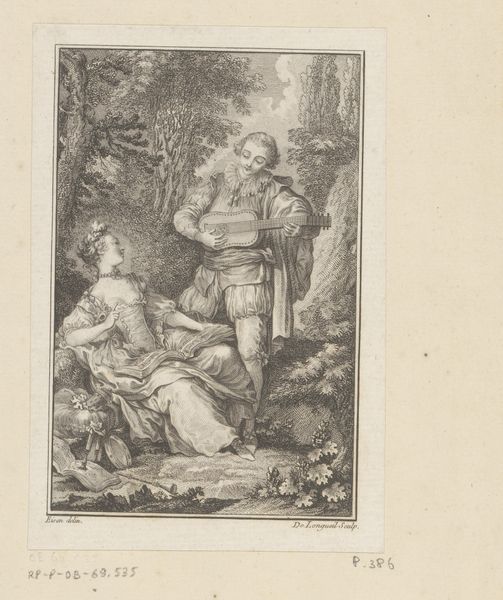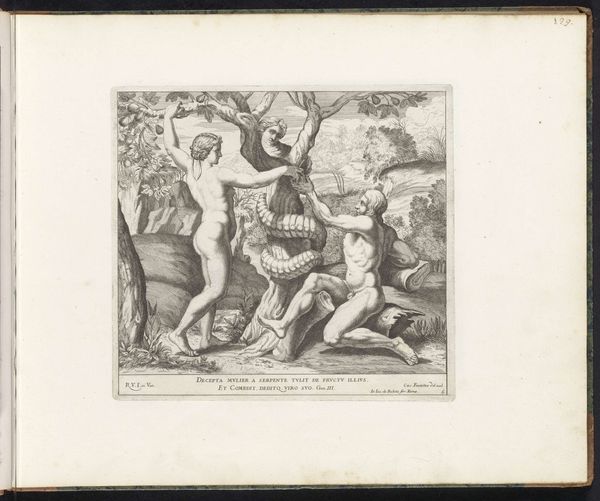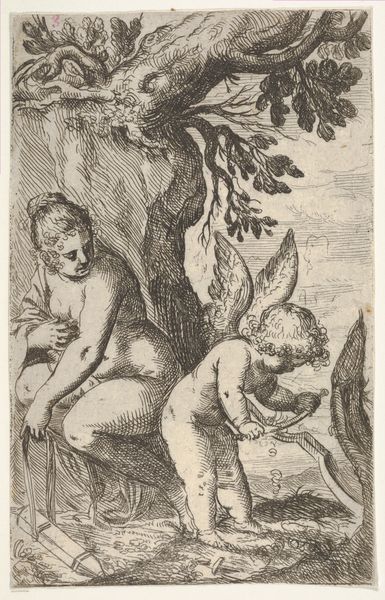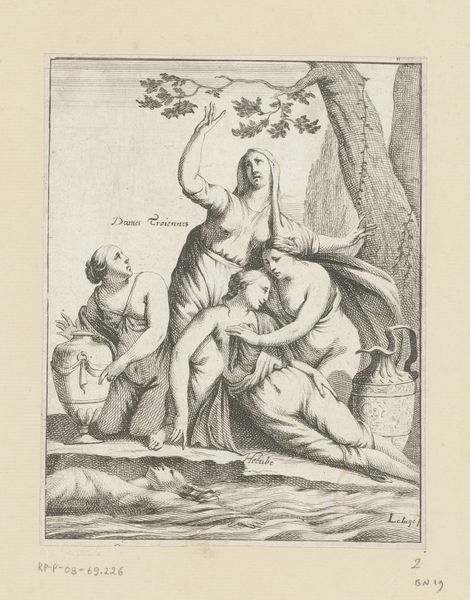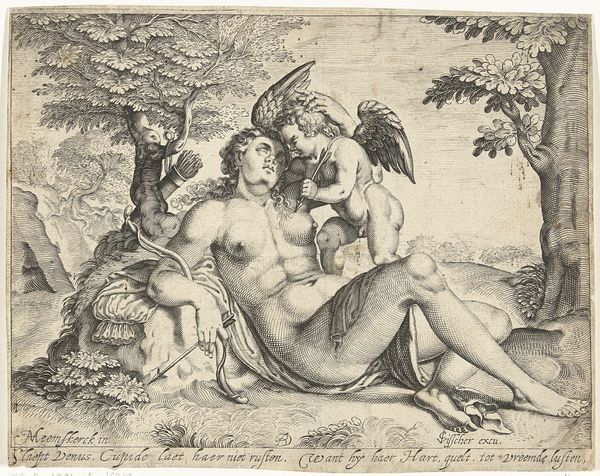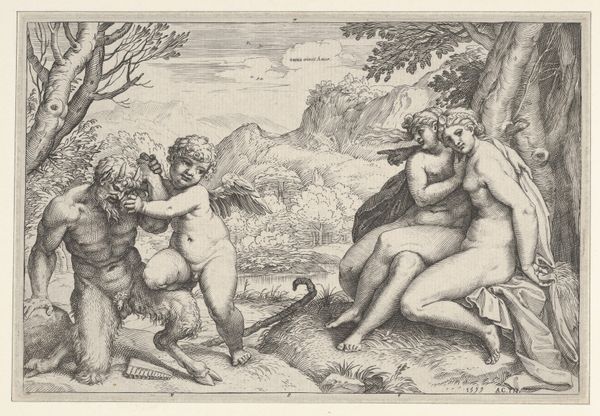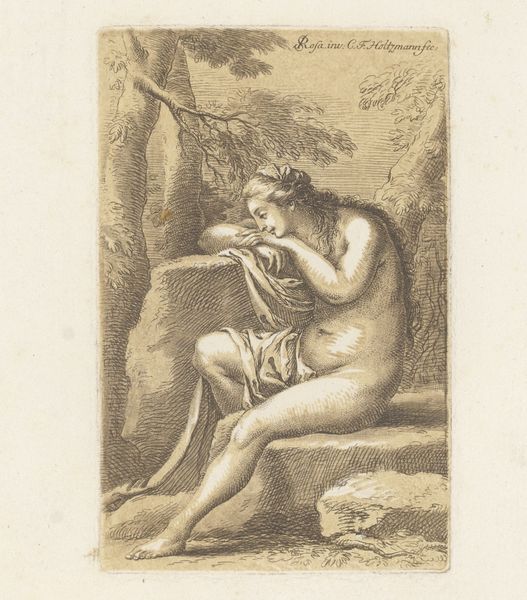
print, engraving
#
allegory
#
baroque
# print
#
history-painting
#
italian-renaissance
#
nude
#
engraving
Dimensions: 11 5/16 x 8 1/4 in. (28.8 x 21 cm)
Copyright: Public Domain
Curator: This engraving from 1599, “Sine Cerere et Baccho Friget Venus,” or, “Without Ceres and Bacchus, Venus Freezes," is by Agostino Carracci and it’s now held at the Metropolitan Museum of Art. It depicts a melancholic Venus, almost barren. Editor: The cool tonality creates an air of desolation. Venus's elongated figure contrasts sharply with Cupid’s slumber, giving him a more immediate sense of liveliness even while he sleeps. Curator: Yes, Carracci explores themes of love, pleasure, and their dependence on material and social support. Without food [Ceres] and wine [Bacchus], even Venus, the goddess of love, is diminished, rendered infertile. It speaks to the economic realities intertwined with passion and procreation. Editor: Looking closely, the composition utilizes contrasting textures achieved through various engraving techniques, notice the dense foliage juxtaposed against Venus’s smooth skin, or the sharp line of her arm compared with Cupid's softer form. There’s also the contrast between the figure of Venus in the foreground and a landscape glimpsed in the background, adding to that starkness of the mood. Curator: Absolutely, this gets to how Carracci cleverly critiques societal expectations surrounding women and their reliance on material sustenance provided by male figures. It underscores a vulnerable, precarious existence often glossed over. The myth, deconstructed, shows that goddesses aren't exempt from dependency within the social structure. Editor: So true. But that dependency— that interplay between figures— also is structurally echoed in the use of lines to describe form, with heavier contour lines giving weight and dimensionality and thereby grounding this picture. Carracci's lines carry a sort of cultural weight too. Curator: Indeed. It allows us to delve into the social critique and recognize that these are all deeply rooted, intertwined elements within the broader societal picture. This examination, this interpretation, is essential to unveiling those subtleties within the narrative. Editor: Precisely. A sharp reminder, if one were needed, of how artful compositions reflect societal conditions. Curator: And of how social critique echoes in the very structural decisions shaping the art object!
Comments
No comments
Be the first to comment and join the conversation on the ultimate creative platform.




